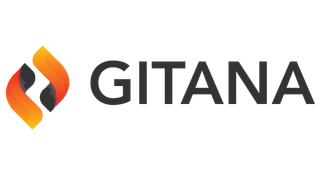Found 454 results for "api datatypes association"
The search executed in 0.0018 seconds. That's fast.

|
How does security work in Cloud CMS?Support Article Explore Cloud CMS security with object and team role-based authorities for flexible content access control and project collaboration. (Support 1.0)
Score: 2.285
|

|
Directed and Undirected AssociationsSupport Article Explore directed and undirected associations in Cloud CMS API, enhancing node relationships in powerful, flexible ways. (Support 1.0)
Score: 2.2572
|

|
Gitana 3.2 / Guide / Guide / Policies / Node PoliciesDocumentation Reference Optimize node policies with custom behaviors for node creation, updates, and deletions in your content graph. (Gitana 3.2)
Score: 2.184
|

|
Gitana 4.0 / Content Engine / Behaviors / Policies / Node PoliciesDocumentation Reference Optimize your content graph with custom node policies to enhance behavior management on nodes creation, updates, and deletions. (Gitana 4.0)
Score: 2.184
|

|
Gitana 3.2 / Guide / Guide / TransferDocumentation Reference Effortlessly transfer, import, and export your data within Cloud CMS installations, ensuring seamless backup and data mobility. (Gitana 3.2)
Score: 2.1572
|

|
Gitana 4.0 / Content Engine / TransferDocumentation Reference Effortlessly transfer and manage your data within Cloud CMS installations using our universal import/export feature for seamless backups and content migration. (Gitana 4.0)
Score: 2.1572
|

|
Gitana 3.2 / Guide / Guide / Scripting / NodeDocumentation Reference Explore comprehensive scripting facilities for nodes, including properties, associations, methods, and code examples. (Gitana 3.2)
Score: 2.1402
|

|
NodeDocumentation Reference Explore comprehensive scripting facilities and methods for managing and interacting with nodes, associations, and repositories. (Gitana 4.0)
Score: 2.1402
|

|
Gitana 3.2 / Guide / Guide / Actions / Move NodeDocumentation Reference Efficiently move nodes in your content graph preserving properties and association types. (Gitana 3.2)
Score: 2.1349
|

|
Gitana 4.0 / Content Engine / Behaviors / Actions / Move NodeDocumentation Reference Move a source node within the content graph while preserving its properties and association type. (Gitana 4.0)
Score: 2.1349
|

|
Gitana 3.2 / Guide / Guide / Features / Stats Sum CounterDocumentation Reference Enhance your Cloud CMS stats with custom sum counters by aggregating association statistics. (Gitana 3.2)
Score: 2.1238
|

|
Gitana 4.0 / Content Engine / Aspects / Stats Sum CounterDocumentation Reference Aggregate counters with the Stats Sum Counter in Cloud CMS to boost node statistics and track article popularity. (Gitana 4.0)
Score: 2.1238
|

|
Gitana 3.2 / Guide / Guide / Features / Knowledge SharingDocumentation Reference Optimize your knowledge sharing with our advanced features to seamlessly propagate knowledge properties across nodes. (Gitana 3.2)
Score: 2.0874
|

|
Gitana 4.0 / Content Engine / Aspects / Knowledge SharingDocumentation Reference Optimize knowledge sharing in Cloud CMS with automatically propagated properties using f:sharing-knowledge feature. (Gitana 4.0)
Score: 2.0874
|

|
Gitana 3.2 / Guide / Guide / Features / Property MappingDocumentation Reference Automate property value mapping for efficient data management across associations, ensuring seamless updates and integration. (Gitana 3.2)
Score: 2.0731
|

|
Gitana 4.0 / Content Engine / Aspects / Property MappingDocumentation Reference Automate property mapping in graph structures efficiently, leveraging MongoDB indexing for fast lookups. Ideal for content reuse and graph traversal. (Gitana 4.0)
Score: 2.0731
|

|
Gitana 3.2 / Guide / Guide / Content Modeling / ScriptsDocumentation Reference Explore Cloud CMS script nodes, behaviors, and policy implementations using JavaScript for dynamic content management. (Gitana 3.2)
Score: 2.0607
|

|
Gitana 4.0 / Content Engine / Content Models / ScriptsDocumentation Reference Learn how to implement JavaScript behaviors on content nodes in Cloud CMS. Create scripts, define article types, and bind behaviors efficiently. (Gitana 4.0)
Score: 2.0607
|

|
Gitana 3.2 / Guide / Guide / Features / Behavior BindingDocumentation Reference Implement behavior binding in your system for node policy execution with script or rule integration. (Gitana 3.2)
Score: 2.0474
|

|
Gitana 4.0 / Content Engine / Aspects / Behavior BindingDocumentation Reference Optimize behavior implementations with behavior binding for policy-driven script execution. (Gitana 4.0)
Score: 2.0474
|

|
Gitana 3.2 / Guide / Guide / Bulk Import / NodesDocumentation Reference Streamline content import with Cloud CMS Bulk Import tool for easy handling of articles and authors data. (Gitana 3.2)
Score: 2.0453
|

|
Gitana 3.2 / Guide / Guide / Features / ContainerDocumentation Reference Mark nodes as containers in Cloud CMS for path-based navigation without needing a folder structure. (Gitana 3.2)
Score: 2.0453
|

|
Gitana 4.0 / Content Engine / Aspects / ContainerDocumentation Reference Transform your content organization with Cloud CMS containers, enabling flexible relationship modeling without folder constraints. (Gitana 4.0)
Score: 2.0453
|

|
Gitana 4.0 / Content Engine / Bulk Import / NodesDocumentation Reference Optimize content import with Cloud CMS Bulk Import tool and Packager API for structured data files. (Gitana 4.0)
Score: 2.0453
|

|
How do I search for nested content?Support Article Optimize nested content search using Cloud CMS indexes, MongoDB, and Elastic Search for powerful querying and association. (Support 1.0)
Score: 2.0453
|
